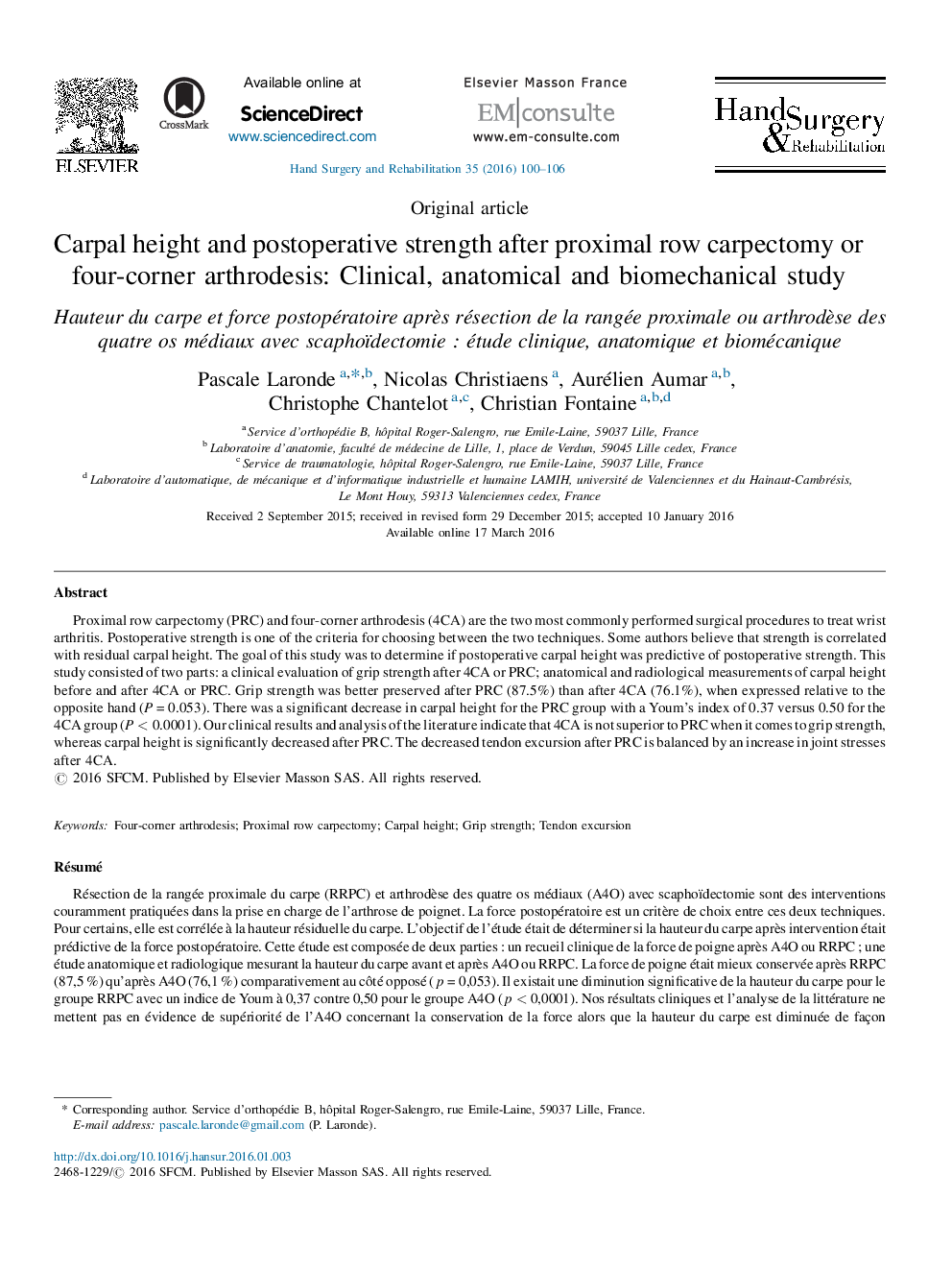| کد مقاله | کد نشریه | سال انتشار | مقاله انگلیسی | نسخه تمام متن |
|---|---|---|---|---|
| 4059785 | 1265869 | 2016 | 7 صفحه PDF | دانلود رایگان |
Proximal row carpectomy (PRC) and four-corner arthrodesis (4CA) are the two most commonly performed surgical procedures to treat wrist arthritis. Postoperative strength is one of the criteria for choosing between the two techniques. Some authors believe that strength is correlated with residual carpal height. The goal of this study was to determine if postoperative carpal height was predictive of postoperative strength. This study consisted of two parts: a clinical evaluation of grip strength after 4CA or PRC; anatomical and radiological measurements of carpal height before and after 4CA or PRC. Grip strength was better preserved after PRC (87.5%) than after 4CA (76.1%), when expressed relative to the opposite hand (P = 0.053). There was a significant decrease in carpal height for the PRC group with a Youm's index of 0.37 versus 0.50 for the 4CA group (P < 0.0001). Our clinical results and analysis of the literature indicate that 4CA is not superior to PRC when it comes to grip strength, whereas carpal height is significantly decreased after PRC. The decreased tendon excursion after PRC is balanced by an increase in joint stresses after 4CA.
RésuméRésection de la rangée proximale du carpe (RRPC) et arthrodèse des quatre os médiaux (A4O) avec scaphoïdectomie sont des interventions couramment pratiquées dans la prise en charge de l’arthrose de poignet. La force postopératoire est un critère de choix entre ces deux techniques. Pour certains, elle est corrélée à la hauteur résiduelle du carpe. L’objectif de l’étude était de déterminer si la hauteur du carpe après intervention était prédictive de la force postopératoire. Cette étude est composée de deux parties : un recueil clinique de la force de poigne après A4O ou RRPC ; une étude anatomique et radiologique mesurant la hauteur du carpe avant et après A4O ou RRPC. La force de poigne était mieux conservée après RRPC (87,5 %) qu’après A4O (76,1 %) comparativement au côté opposé (p = 0,053). Il existait une diminution significative de la hauteur du carpe pour le groupe RRPC avec un indice de Youm à 0,37 contre 0,50 pour le groupe A4O (p < 0,0001). Nos résultats cliniques et l’analyse de la littérature ne mettent pas en évidence de supériorité de l’A4O concernant la conservation de la force alors que la hauteur du carpe est diminuée de façon significative après RRPC. La diminution de l’excursion tendineuse après RRPC est contrebalancée par l’augmentation des contraintes après A4O expliquant possiblement ces résultats.
Journal: Hand Surgery and Rehabilitation - Volume 35, Issue 2, April 2016, Pages 100–106
